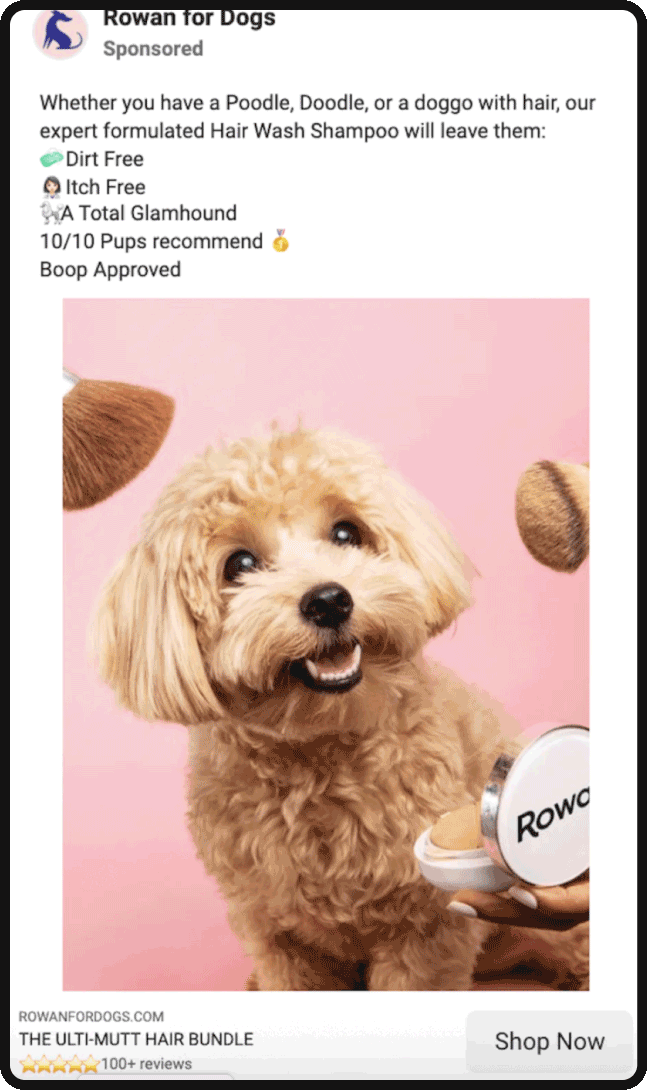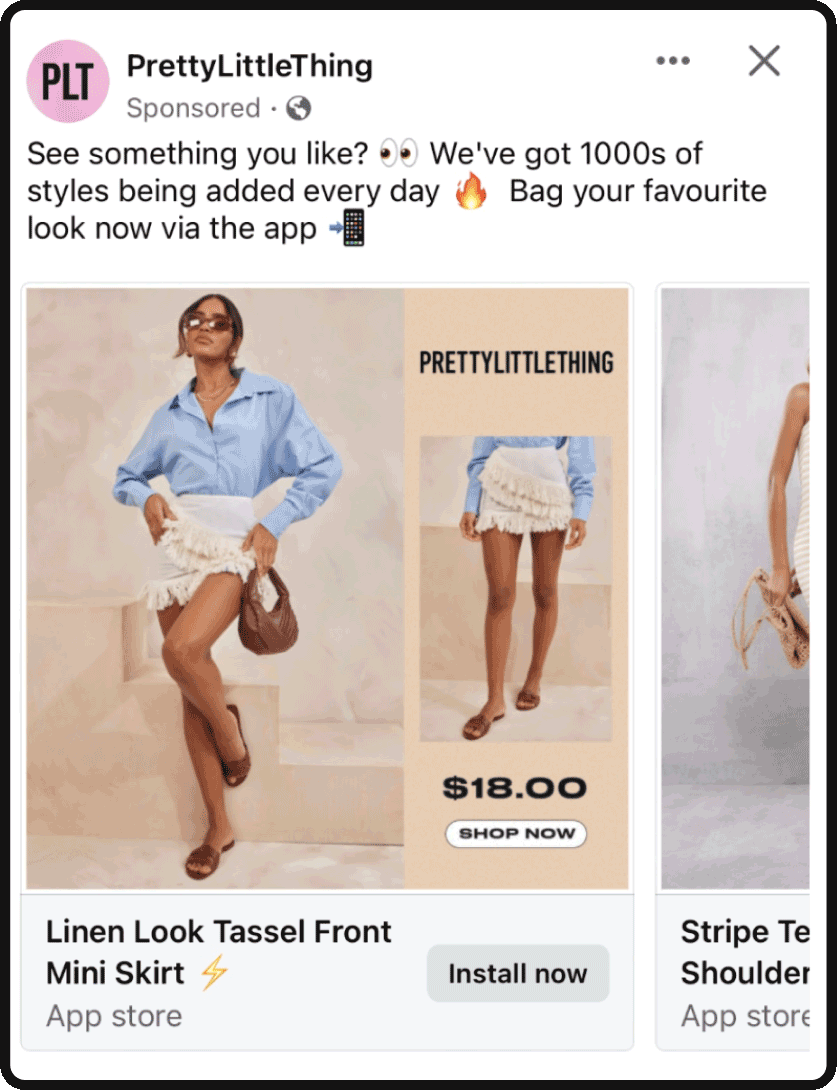In the fast-paced and competitive world of online sales, having a solid eCommerce sales strategy is crucial to achieving success and reaching your goals. What is an eCommerce sales strategy exactly? Essentially, it’s the comprehensive business strategy that outlines the steps you need to take to drive sales, increase revenue, and maintain a competitive edge in the marketplace.
In this blog post, we’ll dive into the core concepts of a strong eCommerce marketing strategy, explore specific sales strategies that are relevant to eCommerce, reveal the best approach to boosting eCommerce sales, discuss the applicable social media marketing channels, and provide actionable tips to increase the sales of your online store.
Integrating eCommerce Sales Strategy With Paid Social Ads
A successful eCommerce strategy that effectively ties in paid social media advertising involves a well-coordinated approach that leverages the strengths of both your eCommerce platform and your chosen paid social platforms.
The goal of this strategy is to effectively and efficiently find, convert, and retain customers, optimizing the growth of your business. The first step in crafting your online strategy is to first establish the specific marketing goals of your eCommerce business for the year, such as increasing online sales volume, YoY revenue growth, expanding your customer base, boosting online brand awareness, or promoting a new launch.
From there, you’ll be able to choose the right social platforms to support your initiatives. Since each platform offers unique features and demographics, you’ll need to tailor your strategy accordingly.
Tailor Your Customer’s Journey Through The Funnel
E-commerce businesses must grasp the intricate path prospective customers take prior to making a purchase and take time to tailor each phase of this customer journey especially. This practice guarantees the creation of an optimized sales funnel for your eCommerce platform, standing as a pivotal factor in achieving growth for your online business.
Central to this endeavor is the customer experience that you deliver. At each juncture of the journey, customers expect a seamless, speedy, and simple exchange. By delivering this type of exceptional customer experience, you accomplish more than a mere transaction—you amplify order frequency, foster repeat buying, and create greater loyalty from every customer.
Let’s talk about each stage of the customer journey and how it can be supported by your eCommerce strategy and paid social advertising initiatives.
Awareness Stage
In the awareness stage, the primary goal is to capture the attention of your target audience and introduce them to your brand and product selection. This stage is crucial because it lays the foundation for building brand recognition, trust, and consideration among potential customers.
Furthermore, this initial introduction unveils your brand and its offerings to customers, and it must be done with great attention to detail, as you only get one first impression.
Most users use this first touchpoint to educate themselves on your brand, often perusing your product descriptions, delving into your online reviews, or reading through your ‘about us’ page. Therefore, you must take time to update all of these pages to ensure they represent your online brand well.
When it comes to paid social media marketing campaign objectives for the top of the funnel, you’ll likely want to use one or more of the following campaign types based on your budget and goals:
- Cold Traffic
- Cold Awareness
- Cold Lead Generation
Keeping your campaigns cold at the top of the funnel ensures that you’re only showing your search ads to new users and not wasting any marketing dollars on “introducing” a user who is already familiar with your brand. To make a campaign cold, you need to exclude certain groups of people from your audience targeting. This usually includes one or more of the following:
- Website Visitors
- Past Purchasers
- Full Email List
Onto deciding who you should include in your targeting at this stage. It’s a great idea to create a lookalike audience based on a tried and true group of users, such as past purchasers.
Start with a 1% lookalike, and expand based on its success. Other suggestions would include interest-based audiences or smart campaigns that find users for you using the social media platform’s algorithm.
Below is an example of a correctly executed top-of-funnel ad and why it works.

- Utilizes an inviting and eye-catching color choice in the creative.
- Stops the target customer from scrolling by showcasing a dog.
- Inclusive of all different dog owners in the first line of ad copy.
- Educational and value driven.
- Provides confidence in the user by sharing positive reviews.
- Prompts the user to take action.
Consideration Stage
The consideration phase marks the juncture where customers zero in on a desired product and weigh their options. They may delve deeper into researching the specific product or compare it against alternatives from rival brands. It’s imperative to harness tactics like retargeting and defined interest targeting to maintain the user’s interest in your brand and keep your offering at the forefront of their minds.
At this point, the customer has usually seen your brand at least once and may have even lightly perused your website. However, they did not convert. They’re likely comparing you to your competitors, so now’s the time to stand out. At this point in the game, you’re going to want to focus mainly on campaigns optimized for conversions. Groups that you’ll want to target with these campaigns at this stage should include:
- Site Visitors (who have not purchased).
- Engaged Social Users.
- Competitor Interests.
In terms of the ad itself, you’ll want to really push the value propositions that set your brand apart from your competitors, which will not only help increase your click-through rates but also your conversion rates. Below is an example of an ad that does this:

- Makes the customer feel like they’re getting a good deal.
- Showcases a broad color selection for the customer to choose from.
- Highlights the luxurious aspect of their brand.
Conversion Stage
The conversion, or decision phase, signifies the ultimate verdict: whether the user will seal the deal on your product or service. Given the staggering eCommerce shopping cart abandonment rate of approximately 70%, this stage is often where potential customers take a step back. The focus here lies in holding the customer’s hand across the finish line through tactics like abandoned cart and checkout recovery initiatives, remarketing segmentation, and proactive customer support.
For this stage, you want to keep your campaigns optimized for conversions, but the most important campaign to include is a dynamic remarketing campaign. A dynamic remarketing campaign will automatically retarget someone who has abandoned their cart or the checkout process with an ad featuring the products they were viewing.
The users within all of your conversion stage campaigns need to be segmented carefully and often shown different creative based on what they were browsing on your website. Some core audience examples you might want to consider including are:
- Cart & Checkout abandoners from various timeframes (7,30,90 days).
- Repeat Page Visitors (excluding past purchasers).
- Users who’ve spent multiple hours on your site (excluding past purchasers).
- New email/SMS sign-ups (excluding past purchasers)
Below is an example of a dynamic remarketing ad:

- Shoppable carousel format.
- Copy that calls out the customer’s previous interest.
- Dynamic product selection.
Loyalty/Retention Stage
After successfully acquiring a new customer and guiding them through the preceding stages, the spotlight shifts to retention and maximizing their lifetime value. This commences by crafting and maintaining an exceptional experience for your existing customer base. Some tactics you can test with these audiences are cross-selling and upselling in order to increase AOV (average order value), scale CLV (customer lifetime value), increase CVRs (conversion rates) and generate positive customer reviews.
For your campaigns and audiences, continue optimizing toward conversions and segment based on purchase history and behavior. Below are some audience suggestions:
- All Past Purchasers
- Lapsed Buyers (purchasers from a certain time period that haven’t purchased again).
- Specific Product/Collection Purchasers.
- High AOV Customers
- Email List Segments.
Below is an example of a well-crafted retention ad:

- Cross-selling a new women’s collection to a past women’s collection purchaser.
- Unique shoppable collection format.
- Clear call to action.
Outside of social media advertising, there are several other digital marketing initiatives that can support your holistic digital marketing strategy. This includes:
Search Engine Optimization (SEO)
SEO plays a crucial role in driving e-commerce sales by increasing the visibility and organic traffic to your eCommerce website. When done effectively, SEO can result in higher rankings on search engine results pages (SERPs), leading to increased website visits, more targeted leads, and ultimately more conversions and sales.
Paid Search Advertising (PPC)
Paid search advertising is another powerful method for driving e-commerce sales. It involves creating and placing ads on search engine results pages (SERPs) and other relevant websites. Specifically, paid search platforms, such as Google Ads, allow you to target specific keywords, demographics, locations, and even user behaviors.
This enables you to reach a highly relevant audience that is more likely to be interested in your products, increasing the likelihood of conversion.
Organic Social Media
Aside from the paid social media ads we’ve previously discussed, organic social media has its own advantages. By posting regularly on social media platforms, you can increase your brand’s visibility as well as establish your products in the minds of your target audience.
This awareness can lead to more people considering your products when they’re ready to make a purchase. Additionally, organic social media posts are a great way for you to engage with your existing customer base to create a deeper sense of loyalty and community.
Email & SMS Marketing
Both SMS and email marketing are effective channels for driving eCommerce sales by nurturing customer relationships, providing personalized experiences, and delivering targeted promotions. Specifically, these channels allow you to segment your audiences based on various factors such as purchase history, preferences, demographics, and behavior. This segmentation enables you to send highly personalized content and product recommendations that resonate with individual recipients.
Final thoughts
We can see that in the competitive, rapidly evolving landscape of online retail, crafting a robust eCommerce sales strategy is the bedrock of success. This journey, from clicks to conversions, marries digital media, consumer psychology, and marketing finesse to convert sporadic clicks into lasting brand relationships.
As we conclude this exploration into the realm of eCommerce strategies, you can see that building an effective sales strategy is not an easy feat, as each step in the consumer’s journey delicately balances on a plethora of factors, some that are in your control- and some that are not. The best thing you can do as an eCommerce pioneer is hone in on all of the aspects that you can control and perfect them.
As your main takeaway from this blog, always keep in mind the importance of the four distinct purchasing stages and how to nurture your customer through each of them. By cultivating this seamless customer experience and working on these strategies, you’ll not only secure the sale but also scale customer loyalty and ensure the long-term growth and success of your eCommerce brand.






